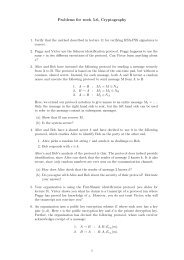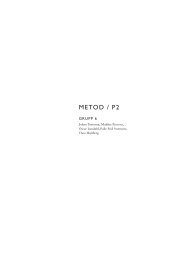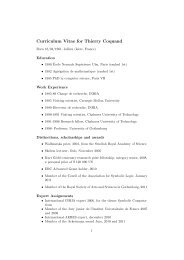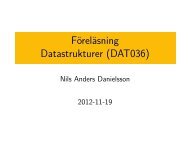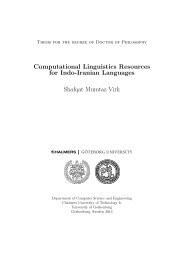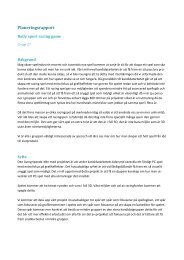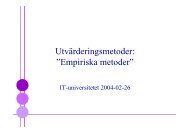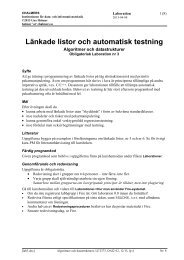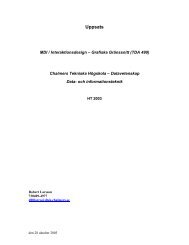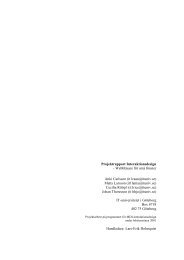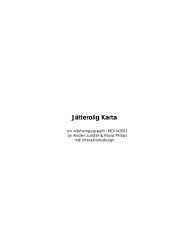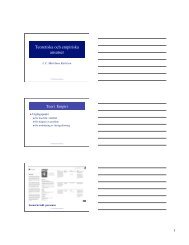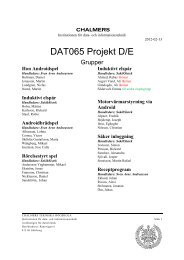GF Russian Resource Library
GF Russian Resource Library
GF Russian Resource Library
Create successful ePaper yourself
Turn your PDF publications into a flip-book with our unique Google optimized e-Paper software.
Phrases are mostly built from Utterances (Utt), which in turn are declarative sentences,<br />
questions, or imperatives - but there are also ”one-word utterances” consisting<br />
of noun phrases or other subsentential phrases. Some Phrases are atomic, for<br />
instance ”yes” and ”no”. Here are some examples of Phrases.<br />
yes<br />
come on, John<br />
but John walks<br />
give me the stick please<br />
don’t you know that he is sleeping<br />
a glass of wine<br />
a glass of wine please<br />
There is no connection between the punctuation marks and the types of utterances.<br />
This reflects the fact that the punctuation mark in a real text is selected as a<br />
function of the speech act rather than the grammatical form of an utterance. The<br />
following text is thus well-formed.<br />
John walks. John walks? John walks!<br />
What is the difference between Phrase and Utterance? Just technical: a Phrase is<br />
an Utterance with an optional leading conjunction (”but”) and an optional tailing<br />
vocative (”John”, ”please”).<br />
2.2 Sentences and clauses<br />
The richest of the categories below Utterance is S, Sentence. A Sentence is formed<br />
from a Clause (Cl), by fixing its Tense, Anteriority, and Polarity. For example, each<br />
of the following strings has a distinct syntax tree in the category Sentence:<br />
John walks<br />
John doesn’t walk<br />
John walked<br />
John didn’t walk<br />
John has walked<br />
John hasn’t walked<br />
John will walk<br />
John won’t walk<br />
...<br />
whereas in the category Clause all of them are just different forms of the same tree.<br />
The difference between Sentence and Clause is thus also rather technical. It may<br />
not correspond exactly to any standard usage of the terms ”sentence” and ”clause”.<br />
Fig.3 shows a type-annotated syntax tree of the Text ”John walks.” and gives<br />
an overview of the structural levels.<br />
Here are some examples of the results of changing constructors.<br />
1. TFullStop -> TQuestMark John walks?<br />
3. NoPConj -> but_PConj But John walks.<br />
6. TPres -> TPast John walked.<br />
7. ASimul -> AAnter John has walked.<br />
8. PPos -> PNeg John doesn’t walk.<br />
11. john_PN -> mary_PN Mary walks.<br />
13. walk_V -> sleep_V John sleeps.<br />
14. NoVoc -> please_Voc John sleeps please.<br />
5



